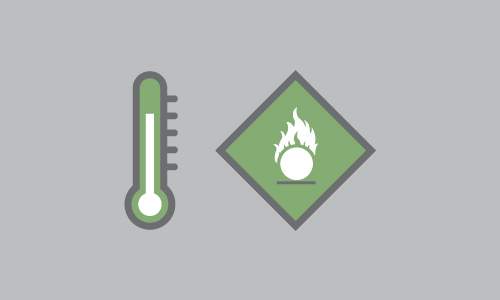Volatile organic compounds and other air pollutants are produced in industries such as printing, paint manufacturing and various coating processes just to name a few (Paint.org). Because of this, organizations and entities such as the EPA have set regulations that these plants and facilities must attain, with the aim of reducing their environmental impact.
There are different VOC abatement mechanisms that are suitable for different circumstances. For example, catalytic oxidizers offer a great alternative to facilities that have low operating temperatures and low volume exhaust streams.
In this article, we’ll discuss the characteristics of catalytic oxidizers, how they work, and when you should consider implementing one of these VOC abatement mechanisms in your facility.
How Do Catalytic Oxidizers Work?
As with most pieces of VOC abatement equipment, catalytic oxidizers are designed to destroy hazardous contaminants before releasing the exhaust air into the atmosphere. Unlike most other VOC abatement mechanisms, catalytic oxidizers don’t require high temperatures. Because they employ industrial-grade catalysts that help them destroy volatile organic compounds and other pollutants, catalytic oxidizers can operate with exhaust temperatures as low as 175°C (350°F) to 345°C (650°F). (EPA)
Advantages of Using a Catalytic Oxidizer
Catalytic oxidizers offer a great solution for plants that don’t have high operating temperatures. Having a catalytic oxidizer to help you destroy VOCs and other pollutants is great for several reasons:
It’s Compact and Practical
Other types of VOC abatement equipment are relatively bulky and need to be placed in specific areas around your plant. Catalytic oxidizers tend to be smaller and lighter for a given flow rate, and they can be placed in different parts of your facility. This makes them both versatile and easy to access whenever you need to carry out maintenance and repair.
Doesn’t Require High Operating Temperatures
As the name indicates, catalytic oxidizers use catalysts in order to destroy volatile organic compounds and other contaminants. This means that the temperatures required to run one of these oxidizers are not as high as other types of abatement methods, which significantly reduces the amount of energy you need to produce clean air.
Has Low Operation Costs
Because it doesn’t require high temperatures, having a catalytic oxidizer can help reduce costs in the long run. This means that your facilities will be more energy efficient, allowing you to save money and keep your plant in great condition for years to come.
Offers High Pollutant Destruction Rating
Although the standards and limits vary depending on region and state, companies must destroy 96% to 99% of all VOCs and other air pollutants before releasing exhaust air into the atmosphere. Catalytic oxidizers can help your plant attain these goals and allow you to stay prepared for the future by maintaining a high level of pollutant destruction rating.
Can Run in Short Cycles
A lot of alternative VOC abatement methods take a significant amount of time and energy to warm up, which means they are only suitable to run around the clock. Catalytic models make a great alternative if your facility is not big enough to keep your oxidizer running 24 hours a day. They can be set up to run in shorter cycles that align with the stages of your manufacturing process.
Suitable for Different Types of Environments
Another benefit of catalytic oxidizers is that they can be used in an array of environments. This includes direct fire, recuperative, and regenerative oxidizers, allowing you to make the choice that best suits your plant.
Selecting the Best VOC Abatement Technique for Your Facility
With so many different VOC abatement techniques out there, choosing the best one for your company can help save you a significant amount of time and money. If you are looking to get the best VOC abatement method installed in your facility, get in touch with The CMM Group today.
Our team of qualified professionals will be more than happy to help you find the ideal solution for your case, so give us a call today or fill out our online contact form now.




